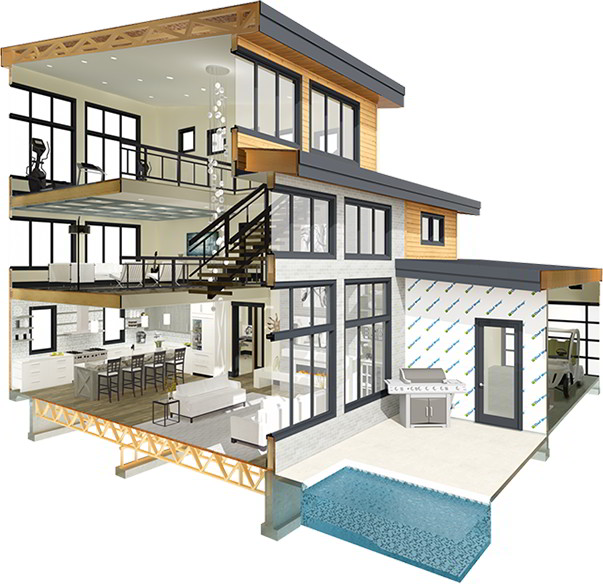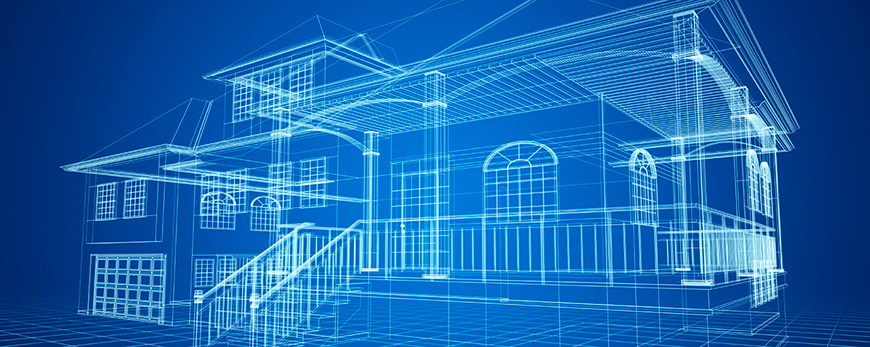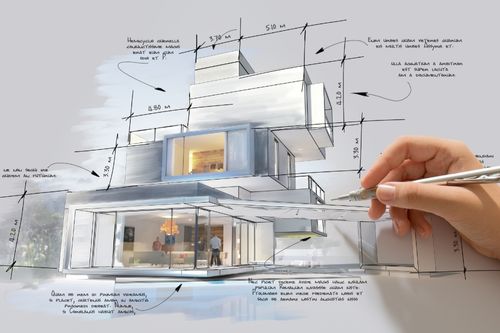Discover Award-Winning Tasks by Distinguished CDA Architects
Discover Award-Winning Tasks by Distinguished CDA Architects
Blog Article
A Detailed Overview of Architectural Styles and Their Influence on Modern City Planning and Development
Architectural designs have long acted as a mirror to the societal values and technical advancements of their time, playing a vital duty in shaping modern city preparation and advancement. From the magnificence of Neoclassicism to the practical technique of Brutalism, each style has actually introduced distinct ideas that influence metropolitan appearances and capability. As modern obstacles develop, consisting of sustainability and neighborhood requirements, comprehending these historical frameworks comes to be crucial. The resulting discussion not just informs future layout techniques however likewise raises relevant questions concerning the balance in between heritage and innovation in our advancing metropolitan landscapes.
Historical Overview of Architectural Styles

As societies transitioned through the Center Ages, Gothic style emerged, characterized by its verticality and intricate describing, mirroring the spiritual goals of the era. The Renaissance noted a rebirth of classic perfects, combining art and design in innovative manner ins which affected subsequent designs throughout Europe.

Today, architectural designs proceed to evolve, driven by globalization and sustainability problems, reflecting a dynamic interaction between heritage and advancement. This historical review underscores the relevance of style as a mirror of societal development and as a stimulant for city advancement.
Secret Architectural Styles Explained
The variety of architectural styles shows the myriad impacts that form our developed atmosphere, each personifying distinctive characteristics and cultural relevances. Trick building styles include Classic, Gothic, Baroque, Innovation, and Postmodernism, each standing for one-of-a-kind historic contexts and visual philosophies.
Timeless architecture, rooted in ancient Greece and Rome, emphasizes symmetry, proportion, and the use of columns (cda architects). On the other hand, Gothic style, growing in the center Ages, is characterized by pointed arches, ribbed safes, and flying buttresses, producing a spiritual top quality in cathedrals. Baroque style, arising in the 17th century, is noted by majesty, intricate embellishment, and a vibrant interaction of light and darkness
Modernism, which got energy in the early 20th century, prioritizes feature over kind, making use of brand-new products like steel and glass to produce minimalist structures. Postmodernism, responding versus the austerity of Innovation, accepts eclecticism and historical recommendation, commonly including lively aspects and paradox.

Effect On Urban Preparation
In shaping the growth of cities, architectural designs considerably affect metropolitan planning decisions. The selection of building style commonly determines the aesthetic appeals, functionality, and general personality of metropolitan atmospheres. As an example, modernism, with its emphasis on minimalism and functionality, motivates open rooms and the assimilation of modern technology, forming city layouts that focus on efficiency and access. Alternatively, conventional styles may stress historical preservation, causing city layouts that maintain cultural heritage and advertise pedestrian-friendly environments.
Additionally, architectural styles can impact zoning policies and land utilize policies. Urban coordinators need to think about the dominating building patterns when making areas, ensuring that brand-new growths integrate with existing frameworks. This factor to consider promotes natural metropolitan landscapes and improves neighborhood identity.
The implementation of specific building styles can additionally influence socioeconomic elements within a city. For example, high-end contemporary layouts might draw in affluent locals and services, causing gentrification, while more inexpensive housing remedies may focus on sensible and sustainable layouts to suit diverse populations. Eventually, the interaction between building styles and urban preparation creates dynamic cities that mirror both historical context and modern requirements, forming the lived experiences of their occupants
Sustainability and Modern Architecture
Building designs play a critical duty in attending to contemporary difficulties, particularly in the world of sustainability. As city locations increase and environmental issues escalate, contemporary design increasingly accepts sustainable design concepts that prioritize energy performance, source conservation, and marginal ecological effect.
Contemporary building movements, such as biophilic style and environment-friendly architecture, advocate for frameworks that integrate with their surroundings, making use of all-natural materials and promoting biodiversity. These designs commonly include renewable power sources, such as solar panels and wind turbines, to minimize dependence on fossil fuels and lower carbon footprints.
Additionally, the assimilation of innovative technologies, such as wise structure systems, improves power monitoring, optimizing source use while making sure occupant comfort. Innovative water administration methods, consisting of This Site rain harvesting and greywater recycling, more add to lasting city environments.
Notably, sustainability expands past ecological concerns; it incorporates social and financial measurements. By cultivating area health and advertising inclusivity, modern-day building designs straighten with lasting growth objectives. Subsequently, the advancement of building techniques remains to form resistant cities that not just fulfill the requirements of today however also safeguard the future for generations ahead.
Neighborhood Engagement in Design
Community involvement in style functions as a vital bridge between architects and the populaces they serve, guaranteeing that the constructed atmosphere reflects the demands and goals of its customers. This collective process welcomes neighborhood members to add their insights and choices, fostering a sense of possession and responsibility towards the spaces they populate.
Efficient community engagement uses different methods, such as workshops, studies, and public forums, to collect varied perspectives. These methods facilitate a two-way discussion, allowing designers to recognize regional contexts while equipping residents to voice their problems and desires. This inclusivity not just enhances the style top quality but likewise promotes social equity by attending to the unique difficulties encountered by marginalized groups.
Additionally, area engagement can lead to innovative services that could not arise in a conventional style procedure. By incorporating neighborhood knowledge and cultural values, designers can create rooms that resonate more deeply with individuals, boosting use and sustainability. Ultimately, prioritizing neighborhood interaction in layout procedures leads to atmospheres that support social communications, assistance health, and strengthen community ties, consequently playing a pivotal role fit contemporary metropolitan landscapes.
Final Thought
Building styles have actually exceptionally affected contemporary city preparation and advancement, showing advancing social and technological contexts. The assimilation of historic visual appeals with internet contemporary needs fosters urban settings that focus on sustainability and neighborhood interaction. As cities remain to grow and adapt, the recurring discussion in Go Here between architectural heritage and modern design concepts will certainly stay necessary in producing inclusive, vibrant spaces that boost high quality of life and advertise social equity. The future of metropolitan development depend upon this unified balance.
Report this page